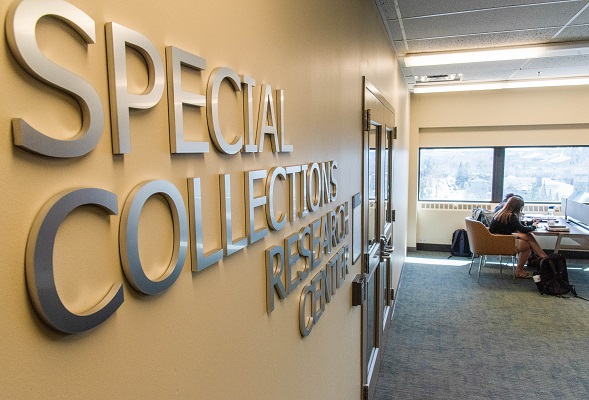Ellen Van Volkenburg and Maurice Browne papers, 1772-1983 (majority within 1910-1960)
50 Linear Feet — 39 boxes, 9 oversize boxes, 90 bound volumes, 1 oversize folder
Correspondence – Extensively documents the personal and professional activities of MB and EVV – Letters to their families, to each other, correspondence to/from other people connected with the theatre – Major correspondents include: Mary Aldis, Dorothy Crawford, Cyril Edwards, Dorothy and Leonard Elmirst, Arthur Davison Ficke, Wilfrid Wilson Gibson, Alexander Greene, Harold Monro, John Cowper Powys, R.C. Stewart, Charles Erskine Scott Wood – Also correspondence about Henry Morley, related to MB's attempted revision of Morley's A First Sketch of English Literature
Writings – Typescripts, annotations, notes, galleys, etc. – MB's autobiography, Too Late to Lament; his plays, including multiple drafts of titles such as The King of the Jews, The Mother of Gregory, and Wings over Europe; prose, including Recollections of Rupert Brooke; and poetry – EVV plays, including Ameriga Vespucci, The American, The Queen's Keys; her prose – Works by others
Theatrical Work – Companies and associations such as Chicago Little Theatre, Cornish School, Maurice Browne Ltd. - contracts, correspondence, financial records, meeting minutes, programs, scripts – Playbills - productions associated with Maurice Browne and Ellen Van Volkenburg, divided into United States and Great Britain; other productions – Printing plates of images and text used for Chicago Little Theatre materials such as playbills, etc. – Promptbooks for many of their plays, including published versions of the plays marked with cuts and edited versions EVV used in readings she gave – Puppets - small amount of material related to puppet productions
Samurai Press – Maurice Browne's project with Harold Monro – Correspondence, business records, several manuscripts, scrapbook, clippings, etc.
Personal and Family – Personal materials related to Maurice Browne and Ellen Van Volkenburg, including correspondence about their engagement, divorce, etc. – EVV's 39 journals covering 1910-1966 – Papers of other family members - Frances Anna Browne, F.H. Browne (MB's father - his papers, dismissal as headmaster, suicide), Edward Stanley Browne, F.W. Mercer (manuscripts he hand lettered and illuminated) – Family papers - Browne family, Neligan family, indentures on vellum
Photographs – Have been organized into groupings by subject – Family and Friends (roman numerals signify subject groupings - legacy from earlier cataloging) - Many photographs of EVV and MB, their families, travel photographs (MB went to India as a young man), Molly Underwood, John Cowper Powys, Arthur Davison Ficke, Mary Aldis, Marjorie Morris, other friends – London and New York I and II - organized by title of play - production/cast photographs (see both categories - not intermingled) - many from Journey's End production – Chicago Little Theatre, Cornish School, and Carmel - organized by title of play - many from Trojan Women – Associates - actors, guest artists, others associated with them
Artwork – Costume and stage designs for various productions (organized by last name of artist when known) - separate section for Othello – Miscellaneous art works - including portraits, woodcuts, watercolors, prints, sketches (organized by last name of artist when known)
Scrapbooks – contain photographs, clippings, programs (some not represented elsewhere in the collection) – some appear to have been created by professional clipping services – document Maurice Browne's parents, their early lives, public appearances, theater reviews, etc.
Printed Material – clippings, topical files
Realia – three breastplates and leather pouch worn by Paul Robeson in Othello, 1930 – puppet made of paper and bamboo – small plaster head (appears to have broken off something)
